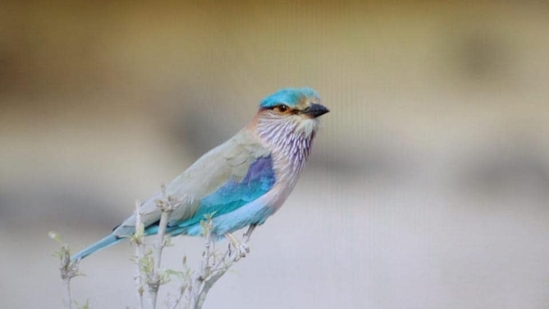The state of birds points to the health of habitats
India must prioritize and restore neglected habitats to protect birds and their ecosystems.
For a long time, the conversation around India’s natural habitats focused on forests. This is partly due to the fact that India’s nature protection and management laws were forest-centric: The Indian Forest Act came in 1927, and the Forest Conservation Act in 1980. Laws to protect or manage other kinds of ecosystems, such as wetlands, came decades later — the Wetland Rules were first notified in 2010 and changed in 2017.

Ecologists have long stressed that there are many other ecosystems that need conservation. Which are these places? An updated understanding is provided by the latest State of India’s Birds (SoIB) report, the largest assessment of birds in the country. SoIB assessed over 30 million observations uploaded by birdwatchers on eBird. The purpose was to find how wild birds are doing; 942 birds (out of around 1,300 Indian birds) were assessed.
We found that 39% of assessed birds have declined in the past decade. But we also found that bird decline for several species was specific to certain habitats.
Using birds as an ecological indicator, we gauge that habitats that need urgent conservation are open natural ecosystems, rivers, and coasts. Birds such as the Indian roller, Great grey shrike, Isabelline wheatear and Rufous-tailed lark have declined sharply. These are birds of “open habitats” that encompass scrublands, grasslands, deserts and arid landscapes. These areas often bear the brunt of overenthusiastic plantation drives and get “greened” into forest-style plantations. It is, therefore, essential that open natural habitats be recognised for what they are, and they remain “open”.
Rivers in India are important for birds, not just for feeding or habitat, but also as breeding sites. Erstwhile common birds such as the little ringed plover and the small pratincole, all of which breed around riverbanks or sand bars, have shown sharp declines. Their decline is a proxy for the degradation of the natural states of rivers. Finally, coastal birds like the Curlew sandpiper, Whimbrel, Terek sandpiper and the Lesser sand plover have declined.
Threats to the coasts include land use change for ports, encroachment and aquaculture. Seeing fewer resident birds likely means resident species are not able to thrive. Second, the decline of migratory species such as sandpipers might signify that birds are not able to withstand bundled threats of the climate crisis, habitat loss and disturbance.
Yet, the findings of SoIB provide an opportunity to focus on hitherto neglected habitats. India could now use birds as a barometer to begin prioritising and restoring habitats that are not getting the conservation they need. This does not always mean protection in the form of a sanctuary or a national park. It can instead mean setting up management systems to allow birds to thrive during breeding or migratory periods. For instance, water should not be released from barrages or dams during the nesting periods of sand-bank nesting birds downstream; and the areas should be protected from predators such as free-ranging dogs. Open areas should not be indiscriminately parcelled off for large scale renewable energy projects or converted to forests.
Instead, we need to prioritise by avoiding sites with large congregations of birds, breeding areas, or with declining birds. Coastal areas also need breathing spaces free of ports, tourism, and other large infrastructure. The previous decade saw a 31% decline in India’s grasslands, and an outdated mindset continues to treat them as “wastelands”, or less productive than forests. The mission outreach of the National Mission for a Green India to put a third of the country under forest cover is a worthy goal, but the plantation should not be on grasslands or scrublands.
For example, direct pressures on open landscapes impact a bird like the Indian courser, once an iconic sight in open areas. The courser, like many other scrub birds, cannot survive in a forest. We also note that mudflats, that once hosted migratory shorebirds, have become sites for mangrove forests for climate resilience projects.
It’s essential that plantation sites are chosen with the help of ecologists, and natural areas are not “converted” into forests. India’s commitment to meeting nearly 50% of energy needs through renewable energy by 2030 has to be achieved through a similar prioritisation approach. Deserts, grasslands and seacoasts have been earmarked for windmills and solar farms in states like Madhya Pradesh and Gujarat. Apart from altering habitats, collisions with windmills or electric wires kill large birds such as flamingos, cranes, and bustards.
In this age of big data, the SoIB offers information for better decision-making. The Mapping Your Neighbourhood Avifauna (MYNA) app by SoIB is a tool that provides specific bird information for a region.
Users can delineate a specific geographical region, either by uploading a geospatial boundary file or by drawing one manually. This furnishes a comprehensive report detailing the bird species inhabiting that area. It also provides supplementary information including the bird’s conservation priority, protection status, Red List classification, and more.
Moving forward, it will be essential to include a wider net of government stakeholders for conservation. Apart from the ministry of environment, forests and climate change, we need the ministries of new and renewable energy, jal shakti, housing and urban affairs and rural development to factor ecology in their planning and fulfil our commitments to biodiversity.
The G20 New Delhi Leaders’ Declaration from September 2023 called for conserving forests, biodiversity and oceans. An integral way of saving biodiversity is through birds; yet wild birds cannot be saved without saving their habitats.
Neha Sinha is with WWF-India and Praveen J is with Nature Conservation Foundation. They were a part of the State of India’s Birds Partnership which included 11 other government and non-governmental organisations from India. The views expressed are personal
All Access.
One Subscription.
Get 360° coverage—from daily headlines
to 100 year archives.



HT App & Website







